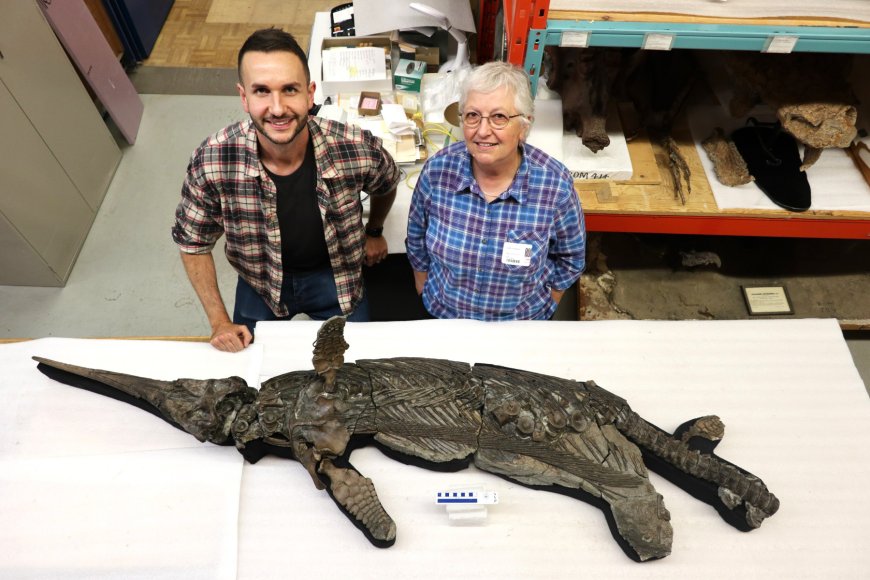Rare 3D Marine Fossil Unearthed on Britain’s Jurassic Coast
Rare 3D Marine Fossil Unearthed on Britain’s Jurassic Coast

Discovery Sheds Light on Early Jurassic Marine Life
London: A remarkable new fossil has been discovered on the famous Jurassic Coast of Britain, offering scientists an exceptionally rare glimpse into marine life from the Early Jurassic period. Named the Dorset Sword Dragon, with the scientific name Ichthyosaur: Xiphodracon goldencapensis, this fossil could fill crucial gaps in our understanding of ichthyosaur evolution during the Pliensbachian age. Details of the discovery and analysis were recently published in the journal Papers in Palaeontology.
Who Discovered It?
The fossil was unearthed by experienced collector Chris Moore, who carefully excavated the entire skeleton. Moore recalled, “I saw part of the tail vertebra sticking out, covered it, then secured permission to dig. I followed the spine and found the hind limbs, ribs, and finally the skull.”
His meticulous work preserved the fossil in exceptional condition, allowing scientists a rare opportunity to study a near-complete specimen.
Why Is This Discovery So Special?
Most ichthyosaur fossils are flattened over millions of years, turning into two-dimensional impressions. However, this specimen is fully three-dimensional, making it an extraordinary find.
A scientist involved in the research explained, “When I struck this hard object, the skull emerged—completely preserved in 3D. It had two large eyes on either side and a massive, sword-like snout filled with hundreds of needle-like teeth. Finding such a well-preserved sample is incredibly rare.”
How Old Is the Fossil?
The Dorset Sword Dragon lived around 190 million years ago in a shallow sea that once covered what is now southern England. Its large eyes and long, pointed snout suggest it was a skilled predator, hunting squid and small fish.
The surrounding rock was once an oxygen-deprived seabed, meaning the animal’s remains were protected from decay and scavengers—explaining the fossil’s remarkable condition.
What Can We Learn from It?
This fossil offers valuable insights into major environmental changes of the era.
Paleontologist Dr. Dean Lomax said, “There are many fascinating features, but its extremely long, sword-like snout and large eyes are especially striking.”
He added, “By looking at its jaws lined with thin, sharp teeth, you can imagine how it hunted. There’s also a strange bone near the nostrils—called the lacrimal—that has never been seen before.”
This discovery not only reveals a new species but transforms our understanding of ancient marine predators and Jurassic ecosystems.
What's Your Reaction?














































